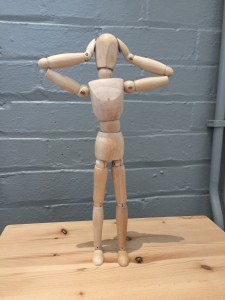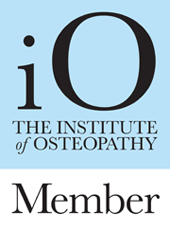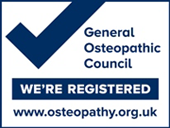Osteopathy & headaches – how much do you know?

The aim of this blog is to discuss an extensive range of differing headache symptoms. Do any of these symptoms sound familiar to you? Have you ever sought help for your own headaches?
Definitions
Headaches (cephalgia) involve discomfort or pain in the head or face. The pain from a headache can be disabling, causing people to miss work, school and social functions.
Migraines are a different type of headache. A migraine is usually a moderate or severe headache felt as a throbbing pain on one side of the head. They are often accompanied by other symptoms.
Primary and Secondary
Primary headaches are not directly attributed to any other underlying cause or condition. Whereas secondary headaches are a symptom of another disorder, injury or disease.
Headache pain can originate from nerves inside the head, spreading out to the scalp, face, mouth and throat. Headaches can also originate from head and neck muscles or the blood vessels in the brain.
Classification
Caffeine headache – the body can become dependent on caffeine following long-term use. When the caffeine is stopped, the body often has withdrawal, leading to a caffeine headache (amongst other caffeine withdrawal symptoms).
Cluster headache – these come in groups (clusters) that can last for several weeks or months. Between the clusters are pain-free times that can last months or even years. Cluster headaches affect men more frequently than women. Pain from a cluster headache is typically on one side of the head but can be both and is non-throbbing. At its worst it can be described as excruciating.
Exertion headache – also known as an activity-related headache. Exertion headaches usually affect younger people, from adolescence to people in their 50s and usually occur in conjunction with lengthy exercise. The headache usually eases with rest. Exertion headaches are caused by Increased blood pressure in the blood vessels of the brain and as primary headaches they are harmless. Generally, a pulsating or throbbing headache that can last 5 mins to 48 hours.
Hangover headache – headaches that occur after consuming alcohol. Chemicals in alcohol, such as tyramine and histamine, are believed to interact with brain chemicals, leading to a headache. This usually occurs when the alcohol level in the body falls.
Hypertension (high blood pressure) Headache – thought to occur when the force of the blood flow inside the arteries of the brain is elevated. Untreated high blood pressure can damage several of the body’s organs, which may cause a headache.
Meningitis & Encephalitis headache – Meningitis is a viral or bacterial infection (and resultant inflammation) of the coverings of the brain and spinal cord. Encephalitis is a direct viral infection (and resultant inflammation) of the brain and spinal cord. Whilst encephalitis is generally less so, both are potentially life-threatening disorders.
- Meningitis symptoms include: severe head pain that isn’t like other types of headaches, sudden fever, stiff neck, sleepiness or difficulty waking up, sensitivity to light, vomiting or nausea, seizures, flu-like symptoms, loss of appetite and a skin rash.
- Encephalitis (serious cases) symptoms include: confusion, disorientation and hallucinations, double vision, rash, tremors, seizures, personality changes, weakness, loss of sensation or paralysis of the body, loss of consciousness and bulging in infants’ soft spots of the head (the fontanels).
Menstrual headache – often occurs around the monthly period and is usually caused by the fluctuating levels of oestrogen and progesterone hormones.
Migraine – characterized by severe head pain often accompanied by other symptoms, which can be disabling in nature. Symptoms include but are not limited to: nausea, vomiting, difficulty speaking, aura (special sensory disturbance), numbness or tingling and sensitivity to light and sound. Head pain associated with a migraine is typically throbbing in nature and located on one side of the head.
The most common migraine types in adults are migraine with aura and migraine without aura. Menstrual migraine, often referred to as hormonal migraine, is the most common type of migraine without aura. Hemiplegic migraine and basilar (base of skull) migraine are the most common types of migraine with aura. Retinal or ocular (eye-related) migraine is another migraine type, which include changes in vision and blurred vision.
Infants, toddlers, children and teens often suffer from an abdominal migraine, which is characterized by stomach pain, nausea and vomiting.
Post-traumatic headache – occurs after an injury to the head or neck. This type of headache is the most common symptom that people experience after a mild head injury. The pain may start immediately or up to a week after the injury and some people still experience pain months after the injury. Some examples of additional symptoms are: headaches made worse by exertion, coughing, bending over or head movements, dizziness, trouble sleeping and/or concentrating
Rebound headache – head pain that returns when pain control medication wears off. Rebound headaches can occur as a withdrawal when pain control medication is ceased. The International Headache Society (IHS) also now use the term Medication Overuse Headache (MOH) to describe rebound headaches.
Sinus headache – occurs when the air passages that surround the nose, eyes and cheeks become swollen, inflamed and/or blocked. Sinus headaches often occur in conjunction with allergies such as hay-fever. Pain is focused around the forehead, nose and face and feels like deep, throbbing pressure which can worsen with coughing, bending forwards or lying down.
Tension headache – the most common type of primary headache. The following are some examples of things that are thought to contribute to tension headaches: stress, jaw clenching, lack of/poor sleep, anxiety, neck strain/arthritis, poor posture and temporomandibular joint (jaw joint) dysfunction.
Tumour headache – a (benign or malignant) mass in the brain leading to a headache. This headache is a good example of a secondary headache, since the mass is to blame for the head pain. Tumours that begin in the brain are called primary brain tumours. Tumours that spread to the brain as result of cancer elsewhere in the body are called secondary or metastatic brain tumours. Typically, a tumour headache will worsen slowly over time and is accompanied by complications arising from pressure on the brain. Examples of associated symptoms are: difficulty speaking, thinking and concentrating, change in memory, confusion, paralysis/weakness on one side of the body, prolonged nausea/vomiting, double vision and seizures. It is important to point out that many of these symptoms occur with other types of headaches, however any of the above symptoms should generally be discussed with a medical professional.
Osteopathic treatment
Neck pain may take varying times to improve depending on the cause of the problem. Osteopaths use a wide range of treatment techniques, including soft tissue massage to ease muscle tension, gentle stretches and joint articulation / manipulation where appropriate. We may also use gentle cranial osteopathic techniques to re-balance the equilibrium of the spine and cranium to ease the symptoms and return the patient to good health.


